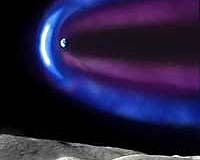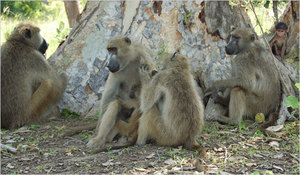
|
| ©Unknown
|
| An artist's impression of the view of the Earth from the Moon if we could see in X-rays. The Earth is surrounded by an X-ray glow caused by particles from the Sun colliding with the gas trapped within the Earth's magnetic shield.
|
Scientists from the University of Leicester have taken an important first step in developing an innovative telescope which could one day be deployed on the Moon. The telescope is called MagEX, which stands for "Magnetosheath Explorer in X-rays" and is an international collaboration between scientists from the United States, the Czech Republic, and the University of Leicester. MagEX will study the magnetosheath, the magnetic "shield" that protects the Earth from the solar wind - the high energy particles that continuously flow out from the Sun. Without this shield, life on Earth as we know it could not exist.
